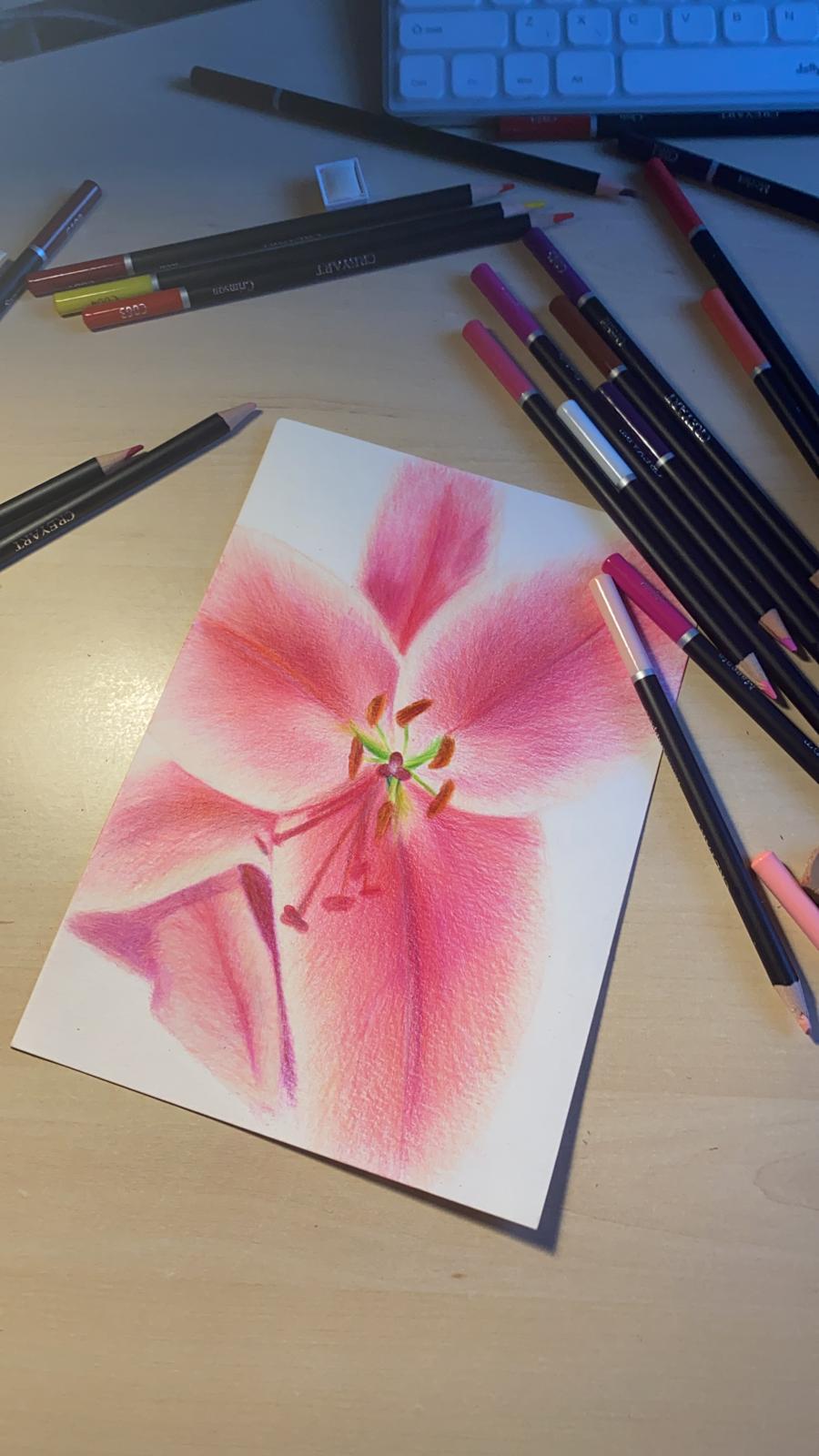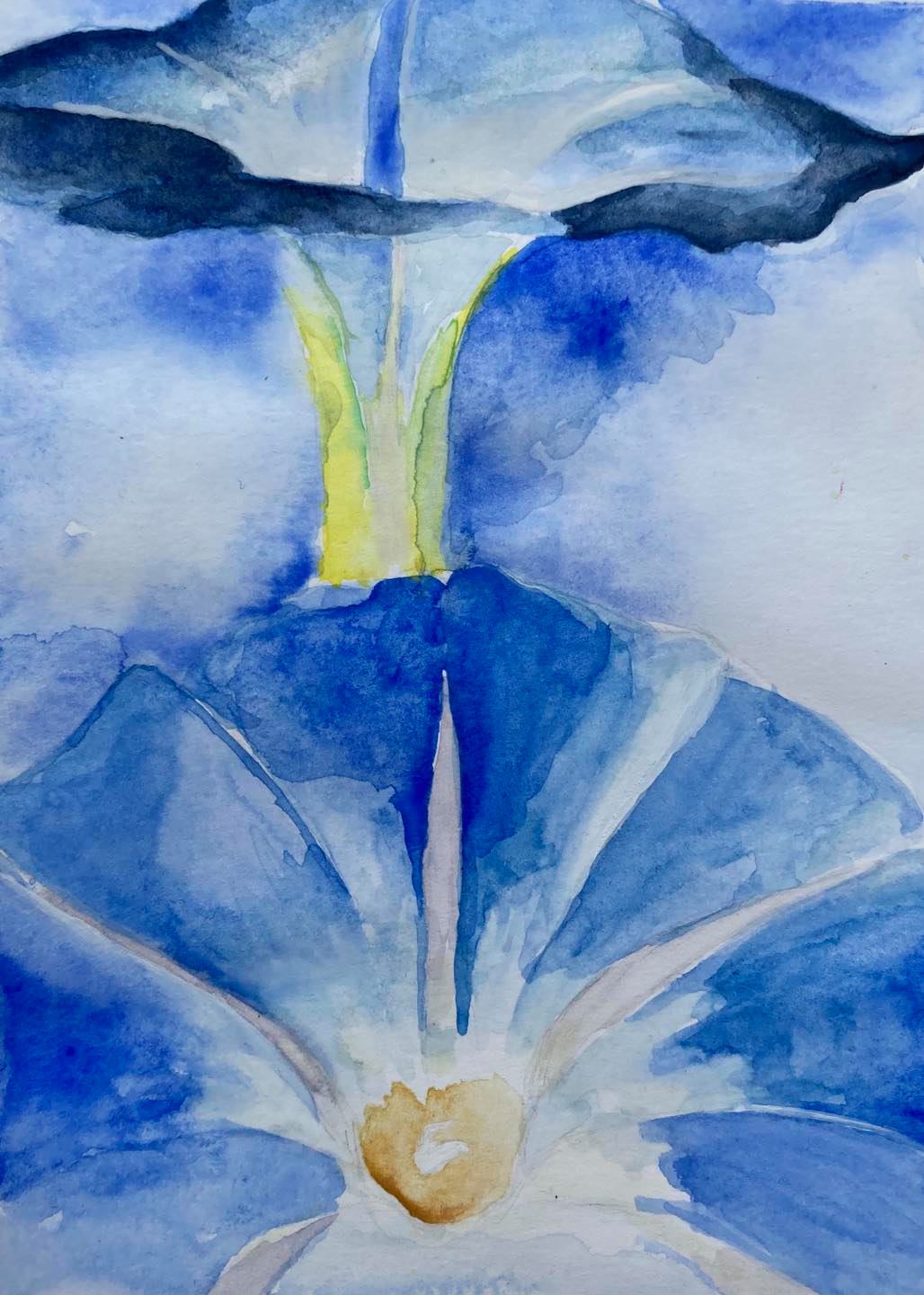One of the themes we have been studying for GCSE Arts, is Natural Forms. We have been inspired by Georgia O'Keeffe's art, and I have chosen to present my reproduction of the Blue Morning Glories as well as my response to her art, with some pictures reflecting colours, patterns, and mastural forms inspired by the nature. Another artist to mention as an inspiration for this theme is Karl Blossfeldt, and the chosen artwork for reproduction is Campanula Medium (Bell flower)b | Karl blossfeldt, Dessin fleur.
I have looked at the shapes of the negative space. Once the basic drawing was done, I have started adding in very clear washes of paint, leaving the lighter sections blank and adding layers of colours for the more dark effects. After completing the coats of colour I have used gouache paint in order to bring back any missed highlights and show the main contrasts.
I have found this drawing interesting to observe, since the shades of blue are similar yet so different. Keeping in mind that the media of my painting is mainly watercolour, which is different than the original artwork, controlling the output of the work is difficult. Even in this situation, I consider my artwork to reflect accuracy on the original piece.
Pictures inspired by her art
Pictures inspired by his work. Click on the picture for full view.

